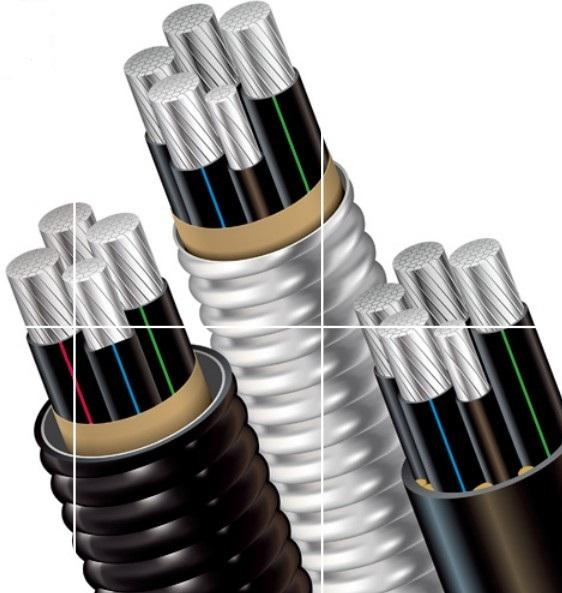Optical transmission hardware integration one-stop service provider
Views: 81 Author: Ada Ru Publish Time: 2021-12-28 Origin: Site
Sanman said that the lightweight design of wire harnesses is a problem that wire harness engineers have been considering, and the application of aluminum wires has always been a concern for us. Compared with copper wires, what are the disadvantages and advantages of aluminum alloy wires?

The conductivity of aluminum alloy is not as good as copper. The thermal conductivity of solid aluminum is 237W/mK, and the thermal conductivity of copper is 397W/mK, and the ratio is close to 1:2.
The mechanical properties of aluminum alloy are poor, and the tensile strength is not as good as that of copper. The tensile strength of industrial pure aluminum is 80~100MPa, and the tensile strength of copper (ie brass) is 200~300MPa. The tensile strength of aluminum alloy has been greatly improved due to the addition of special chemical components and the use of special processing techniques. The elongation rate is 30% higher than that of aluminum, but it is still not as good as copper.
The highest temperature used is not as good as copper. The melting point of aluminum is 660 degrees Celsius, and the melting point of copper is 1083.4 degrees Celsius.
The current-carrying capacity is weak, and the conductivity is not as good as copper. The resistivity of aluminum wire is larger. The resistivity of aluminum is 2.83×10−8(Ω m) and copper is 1.75×10−8(Ω m). The conductivity of aluminum alloy is reduced by the addition of rare earth, magnesium, copper, and chemical elements.
Large volume, because the conductivity of aluminum alloy is not as good as that of copper, it is necessary to increase the cross section of the aluminum alloy conductor to achieve the same conductivity as copper, so that the cable will be thicker. (Ρ=RS/l, ρ is the resistivity, R is the resistance, S is the cross-sectional area, and l is the length). In addition, more insulating materials and shielding materials are required for aluminum wires. The increased size will bring about a series of wiring problems, such as occupying more space, for example, due to the thickening of the wiring harness, the turning radius has also become larger.
The expansion coefficient is large, the expansion coefficient of aluminum is 23.5, and that of copper is 16.6. After repeated thermal cycles, the bonding interface of the aluminum wire and the copper terminal will have voids, which will increase the impedance and cause the temperature rise to be too high in actual work.
Advantages of aluminum alloy wires: aluminum alloy is lighter, the density of pure aluminum (ρ=2.7g/cm3), the density of copper is 8.960g/cm3 (solid); 8.920g/cm3 (molten liquid), the density ratio of aluminum and copper 1:3, in the aerospace field, this advantage of aluminum spikes copper and is widely used.
Cheap. Two aluminum alloy cables and copper cables with similar electrical conductivity, after taking all the costs into account, aluminum alloy cables are much cheaper than copper cables. This is very competitive. The price of aluminum is about 1/4 of the price of copper.
Development of aluminum alloy
The weight and price advantages are the main value driving factors for aluminum wire to replace copper wire. However, compared with copper wire, aluminum wire still has inherent physical performance disadvantages. In order to reduce the performance difference between aluminum wire and copper wire, compared with pure aluminum, current aluminum The characteristics of alloy development mainly include the following aspects:
Connection performance Aluminum alloy electrical connection is as safe and stable as copper wire connection. The composition of aluminum alloy greatly improves its bonding properties. When the conductor is annealed, the added iron will produce high-strength creep resistance, which can ensure the stability of the connection even if the joint is overloaded and overheated for a long period of time.
The flexibility of aluminum alloy is 30% higher than that of copper, the rebound rate is 40% lower than that of copper, and the bending radius of copper cable is 10 ×20 times, while the bending radius of aluminum alloy cable is only 7 times, which is convenient for connection. At present, the use of aluminum alloy cable products has been quite common. The market share of North American countries has reached 80%, but the domestic use is not large. Statistics show that copper Core cables still account for more than 90% of the market share. my country is rich in aluminum and lacks copper, rational use of abundant aluminum ore resources, scientific selection of aluminum alloy cables, under the premise of meeting the electrical performance of the cables, can save costs and produce huge economic and environmental benefits.